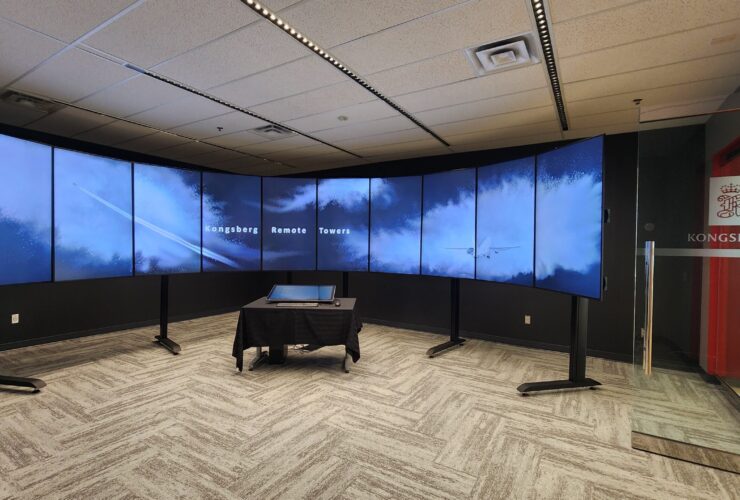FlexJobs Identifies 10 Red Flags of a Toxic Hybrid Workplace
Remote work experts share top warning signs that a company isn’t prepared for hybrid work.
Nine out of 10 companies plan to move to some form of a hybrid-working model, but 68 percent don’t have a detailed plan either in place or communicated yet on what it will look like, according to a McKinsey report. The move to a hybrid work environment has become the inevitable outcome of the “great work-from-home experiment” caused by the pandemic, with 83 percent of workers now viewing the hybrid workplace as optimal. To help workers and job seekers understand whether or not a company will have a healthy hybrid work culture and environment, FlexJobs has identified ten red flags that could signal a hybrid company will become a toxic place to grow a career.
“It is clear that hybrid work will define the post-pandemic workplace, but it remains to be seen if companies are adequately preparing for this transition,” said Sara Sutton, CEO & Founder of FlexJobs. “At the very core of all successful remote and hybrid workplaces are leaders that are taking very conscientious efforts to intentionally consider and then thoughtfully build their company’s work environments. Job seekers and workers should be aware that hybrid workplaces can be toxic on a number of levels if they’re not being carefully managed,” Sutton concluded.
To clarify, a hybrid workplace combines aspects of both in-person and remote workplaces, with three primary setups:
- The first (and most common) method is to have staff work in the office part of the week and remotely the rest of the week. Sometimes staff choose their in-person and remote days. Other times, the company assigns days based on space and business needs.
- Alternatively, some companies rotate staff in and out by the week, meaning team A is in the office for the first week of the month and remote the rest of it, while team B is in during the second week of the month, and so on.
- The other hybrid work model has workers choosing between fully in-person work and fully remote work. This doesn’t mean that remote people never come into the office—it just means that they are remote a majority of the time.
Below are 10 red flags a hybrid workplace will be toxic for a career, according to FlexJobs’ Career Coaching team:
1. There is no real plan for creating a functioning hybrid workforce within the company
Winging it isn’t an option when it comes to creating a high-functioning and fair hybrid workforce. If the company doesn’t seem committed to a clear set of actions to integrate remote and hybrid teams, build a hybrid work culture, or treat hybrid and in-office workers inclusively, it is unlikely that this will be a healthy, equitable place to work for remote workers.
2. There are no senior leaders who work remotely
A company that truly values remote work will have people at all levels of the company who are working remotely, including at the senior leadership level. If only lower or mid-level career employees are allowed to work remotely and all of the senior leadership works in the office, it’s practical to assume that remote workers cannot progress within the company and stay remote. Be sure to examine every level of the organization to see if remote employees are found throughout the organization’s hierarchy.
3. Digital communication tools have not been prioritized
In a hybrid or remote work environment, people can’t just pop into someone’s office to check on things, or have impromptu conversations. This, of course, can put remote workers at a disadvantage. However, there are plenty of synchronous and asynchronous communication tools, as well as very powerful collaboration tools, to help address the gaps that can occur when some people are not physically present. If digital tools have not been set in place or prioritized by management, and teams haven’t been advised on how to optimize them, then they are not equipping teams for success.
4. Celebration, praise, and rewards only happen in the office
A big part of company culture is having celebration, praise, and reward activities to show appreciation for employees and make them feel valued. A red flag for a hybrid work environment is if these things are only taking place in the office and there aren’t strategic efforts to make people working remotely feel included as well. With technology tools and platforms such as Slack and Zoom it is really easy to share praise and encouragement for the whole organization to see. There are also many easy events and activities that can be done virtually as well. Companies that take the time to do these are showing their commitment to the remote work environment.
5. Your manager doesn’t have a solid communication plan for remote team members
Hybrid teams need to pay particular attention to communication, making sure to include remote employees in any meetings or activities being held at the office. It is vitally important that the remote employee and in-office manager have a clear communication plan – who, what, when, and how. If you feel your communication with your manager specifically is lacking, then there is a problem.
6. Team- or company-wide meetings are scheduled at odd hours
Companies that allow employees to work remotely need to consider the varying time zones where everyone is located and try to schedule important company meetings and events at a convenient time for everyone. If management is setting meetings at 5am or 8pm, then they’re clearly not valuing or respecting their remote employees’ time or contributions.
7. Information isn’t accessible
Lack of information for remote employees is a sign of a toxic hybrid environment. If information isn’t shared on some sort of digital platform for everyone to access, there is a good chance you could be out of the loop on something important. A company that is doing hybrid work well, will share information rather than hoard. This could be through an internal email newsletter, a company intranet, a company shared drive, or some other digital platform.
8. Lack of career path for remote employees
If the professional development and career paths for remote workers are less clear than for in-office workers, including promotions and raises, there’s a problem. If it seems like opportunities to learn and grow within your company are reserved for in-office workers, that’s a sign your hybrid workplace doesn’t value remote workers or see them as part of the company’s larger strategic plan.
9. Employees are told they need to use PTO or take a pay cut to work remotely
As some companies start to navigate their hybrid working model, they may create certain stipulations that could negatively impact those who want to work remotely such as cutting their pay or making them use their time off. To maintain an equitable environment for all employees, companies should only cut pay for a legitimate reason such as a cost of living adjustment if employees move away from their headquarters and that should be fully explained and transparent for employees to understand. Additionally, employees shouldn’t be “punished” for choosing remote work by having to use days off. Working remotely should count as a regular workday as if in the office. Ultimately, it shouldn’t negatively impact an employee to choose to work remotely, and employers shouldn’t put blocks up for those employees that choose this if they are truly committed to the hybrid work model.
10. Remote workers aren’t given the appropriate equipment
With a hybrid model, companies can no longer just think about what office equipment and technology is physically in the office. They need to consider employees that are working remotely and provide them the same tools and resources they would for in-person employees. This could be through a home office stipend, loaned equipment that can be taken home, or providing accommodations for employees to work at co-working spaces. A successful hybrid organization will ensure that employees everywhere have access to the technology tools and resources they need to be able to do their jobs successfully.
It’s important to note that a toxic workplace may not have all ten of these red flags. Some may only have a few. Likewise, if a company has one of these red flags, that’s not necessarily proof of a toxic workplace, but rather an indication that the transition to hybrid is still bumpy.
For more information, please visit https://www.flexjobs.com/blog/post/red-flags-toxic-hybrid-workplace/ or contact Kathy Gardner at kgardner@flexjobs.com.
About FlexJobs
FlexJobs is a premium online job service for professionals seeking flexible work, specializing in full-time and part-time remote jobs, employee and freelance jobs, and on-site jobs with flexible, part-time, and alternative schedules. Since its start in 2007, FlexJobs has helped more than 6 million people in their job searches and has created the largest vetted database of legitimate flexible job opportunities in over 50 career categories. In addition, FlexJobs provides robust ongoing career support including curated expert resources and career coaching services to partner with job seekers in all phases of their journey. A trusted source in the media, FlexJobs has been cited in top national outlets such as CNN, Wall Street Journal, New York Times, CNBC, Forbes, and many others. FlexJobs’ Founder & CEO Sara Sutton has also launched two additional partner sites, Remote.co and 1 Million for Work Flexibility, to help provide education and awareness about the viability and benefits of flexible work. Sutton is the creator of The TRaD* Works Forum (*Telecommuting, Remote, & Distributed), dedicated to helping companies leverage the benefits of telecommuting, remote and distributed teams.
Contact Author
KATHY GARDNER
FlexJobs
(203) 253-9531


